detail profile hiroshi inagaki
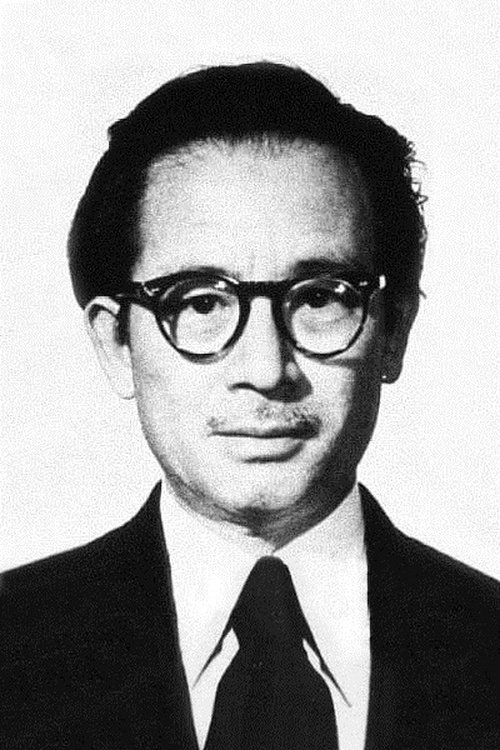
Hiroshi Inagaki
稲垣 浩
atau dikenal sebagai
Riwayat Hidup
From Wikipedia, the free encyclopedia
Hiroshi Inagaki (稲垣 浩 Inagaki Hiroshi, 30 December 1905 – 21 May 1980) was a Japanese filmmaker most known for the Academy Award-winning Samurai I: Musashi Miyamoto, which he directed in 1954.
Born in Tokyo as the son of a shinpa actor, Inagaki appeared on stage in his childhood before joining the Nikkatsu studio as an actor in 1922.
Wishing to become a director, he joined Chiezō Kataoka's Chiezō Productions and made his directorial debut in 1928 with Tenka taiheiki.
Returning to Nikkatsu, he continued making jidaigeki and participated in the Naritaki Group of young filmmakers such as Sadao Yamanaka and Fuji Yahiro who collaboratively wrote screenplays under the made up name "Kinpachi Kajiwara".
Like others in the group, Inagaki was known for his cheerful and intelligent samurai films.
Inagaki later moved to Daiei and then Toho, where he made big budget color spectacles as well as delicate works depicting the feelings of children.
He also produced many films and wrote the scripts for dozens of others.
Info Pribadi
Peran Yang Di Mainkan Hiroshi Inagaki
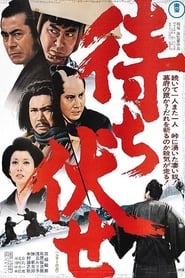 In the Edo period a nameless...
In the Edo period a nameless...Incident at Blood Pass 1970
In the Edo period, a nameless ronin accepts an assignment to go to a mountain pass and wait. Near the pass he stops at an inn where a collection of characters gather, including a gang set on stealing shogunate gold that's soon to come over the pass. When the Ronin's assignment becomes clear, to help the gang, he's ordered to kill the inn's residents, including a woman he's rescued from an abusive husband. He's reluctant to murder innocent people; then he learns that the gold shipment is a trap and he's part of a double cross. How he sorts through these divided loyalties tests of his samurai honor, and perhaps of his love for a woman.
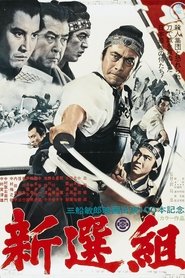 Near the end of the nineteenth...
Near the end of the nineteenth...Shinsengumi: Assassins of Honor 1969
Near the end of the nineteenth century, as the balance of power shifts from Shogunate towards the Emperor, Japan restlessly awaits the dawning of a new age. But not all are content...The Shinsengumi, a small army of samurai, farmers and peasants, band together to do battle against the tide of history. Their leader, Isami Kondo is a man who rises from farmer to fighter to head the fierce Shinsengumi brigade. Using a stern hand and a heart of gold, he rallies his men in defense of the tottering Shogunate. But bloodshed and treachery lurk around every corner.
 Kansuke Yamamoto is a samurai who...
Kansuke Yamamoto is a samurai who...Samurai Banners 1969
Kansuke Yamamoto is a samurai who dreams of a country united, peaceful from sea to sea. He enters the service of Takeda, the lord of Kai domain. He convinces Takeda to kill the lord of neighboring Suwa and take his wife as a concubine. He then convinces the widow, Princess Yu, to accept this arrangement and to bear Takeda a son. He pledges them his life. He then spends years using treachery, poetic sensibility, military and political strategy to expand Takeda's realm, advance the claim of Yu's son as the heir, and prepare for an ultimate battle with the forces of Echigo. Has Kansuke overreached? Are his dreams, blinded by love, too big?
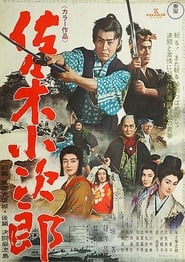 Sasaki Kojiro tells the story of...
Sasaki Kojiro tells the story of...Kojiro 1967
Sasaki Kojiro tells the story of the genius who staked his love, glory, and life on a duel with the supreme master of the sword, Miyamoto Musashi (Tatsuya Nakadai). Oscar winning Hiroshi Inagaki directs this epic motion picture based on Genzo Murakami’s fascinating story. Despite his humble birth, the orphan Sasaki Kojiro (Onoe Kikunosuke) is determined to become the foremost swordsman in all Japan, a title that traditionally belongs to a nobleman. At fencing school, young Kojiro receives the contempt of his classmates because of his superior swordsmanship. When rumors of the upcoming civil war between Toyotomi and Tokugawa clans spread, Kojiro leaves the school and sets out, seizing every opportunity to realize his dream.
 Farmer Abare Goemon is confronted by...
Farmer Abare Goemon is confronted by...Rise Against the Sword 1966
Farmer Abare Goemon is confronted by brigand-like samurai. He raises an army of farmers to fight them and does so brilliantly. When Lord Asakura sees the success Goemon has achieved, he attempts to recruit him to fight in a conflict between Asakura and another clan. Goemon refuses, and Lord Asakura sets out to destroy him.
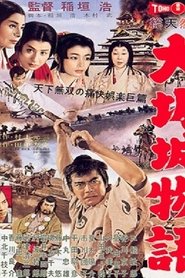 During the raging war between the...
During the raging war between the...Daredevil in the Castle 1961
During the raging war between the Toyotomi and Tokugawa clans, the swordsman Mohei (whose family has been completely decimated) is recruited by Toyotomi to overcome the seat of power, Osaka Castle. Mohei's daredevil skills will be put to severe tests.
 The legend of the birth of...
The legend of the birth of...The Three Treasures 1959
The legend of the birth of Shintoism. In Fourth Century Japan, the Emperor's son Ouso expects to succeed his father on the throne, but Otomo, the Emperor's vassal, prefers Ouso's stepbrother, and conspires to have Ouso die on a dangerous mission he has contrived. But Ouso prevails in the mission and returns to his father's castle under a new name, Prince Yamato Takeru. Otomo plots to have the Prince sent into even greater danger, but Otomo is unaware that the gods have favored the Prince and the outcome is far from what any of them expected.
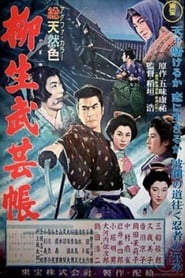 In the Tokugawa Era the clan...
In the Tokugawa Era the clan...Yagyu Secret Scrolls 1957
In the Tokugawa Era, the clan of Lord Yagyu has hidden away three scrolls containing clan secrets which, if revealed, would cause revolution and disaster for the clan. The information is divided among the three scrolls, all of which must be possessed for the secrets to be understood. When Princess Yuhime steals the scrolls, Tasaburo, a samurai with magical powers, and his brother Senshiro are sent to retrieve them.
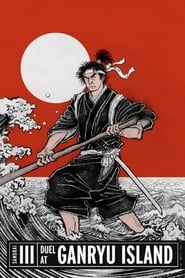 A humble and simple Takezo abandons...
A humble and simple Takezo abandons...Samurai III: Duel at Ganryu Island 1956
A humble and simple Takezo abandons his life as a knight errant. He's sought as a teacher and vassal by Shogun, Japan's most powerful clan leader. He's also challenged to fight by the supremely confident and skillful Sasaki Kojiro. Takezo agrees to fight Kojiro in a year's time but rejects Shogun's patronage, choosing instead to live on the edge of a village, raising vegetables. He's followed there by Otsu and later by Akemi, both in love with him. The year ends as Takezo assists the villagers against a band of brigands. He seeks Otsu's forgiveness and accepts her love, then sets off across the water to Ganryu Island for his final contest.
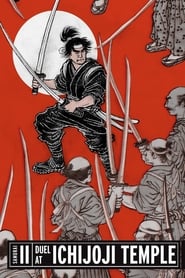 After years on the road establishing...
After years on the road establishing...Samurai II: Duel at Ichijoji Temple 1955
After years on the road establishing his reputation as Japan's greatest fencer, Takezo returns to Kyoto. Otsu waits for him, yet he has come not for her but to challenge the leader of the region's finest school of fencing. To prove his valor and skill, he walks deliberately into ambushes set up by the school's followers. While Otsu waits, Akemi also seeks him, expressing her desires directly. Meanwhile, Takezo is observed by Sasaki Kojiro, a brilliant young fighter, confident he can dethrone Takezo. After leaving Kyoto in triumph, Takezo declares his love for Otsu, but in a way that dishonors her and shames him. Once again, he leaves alone.
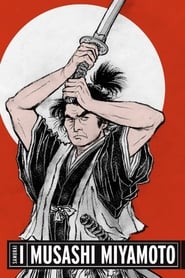 Struggling to elevate himself from his...
Struggling to elevate himself from his...Samurai I: Musashi Miyamoto 1954
Struggling to elevate himself from his low caste in 17th century Japan, Miyamoto trains to become a mighty samurai warrior.
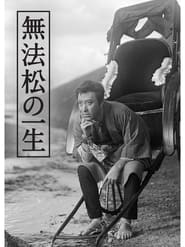 Matsugoro is a poor rickshaw driver...
Matsugoro is a poor rickshaw driver...The Life of Matsu the Untamed 1943
Matsugoro is a poor rickshaw driver whose animated spirit and optimistic demeanor make him a favorite of the town. Matsu helps an injured boy, Toshio, and is hired by the boy's parents.
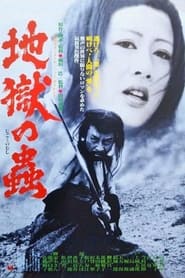 A group of bandits flee to...
A group of bandits flee to... After their lord is tricked into...
After their lord is tricked into...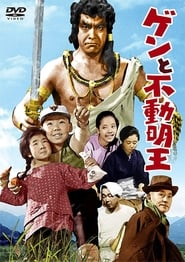 Gen is a lonely orphan boy...
Gen is a lonely orphan boy... A poor rickshaw driver finds himself...
A poor rickshaw driver finds himself...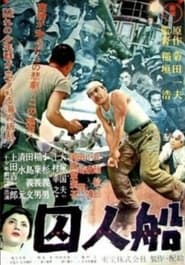 A film by Hiroshi Inagaki
A film by Hiroshi Inagaki